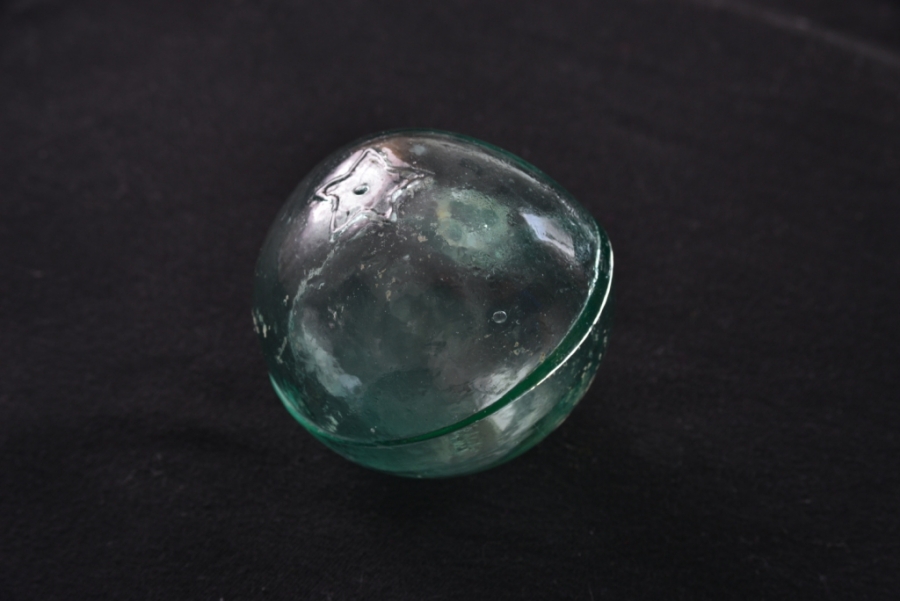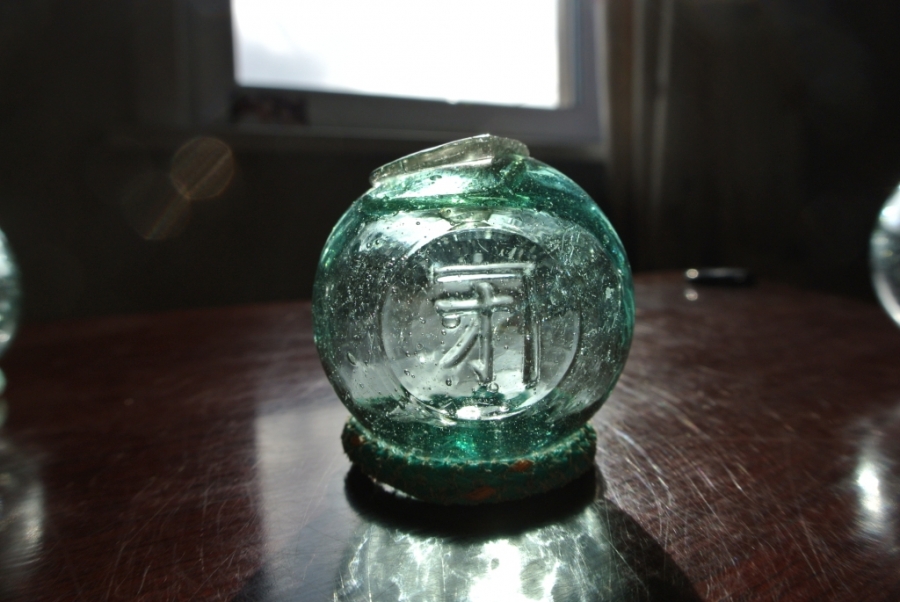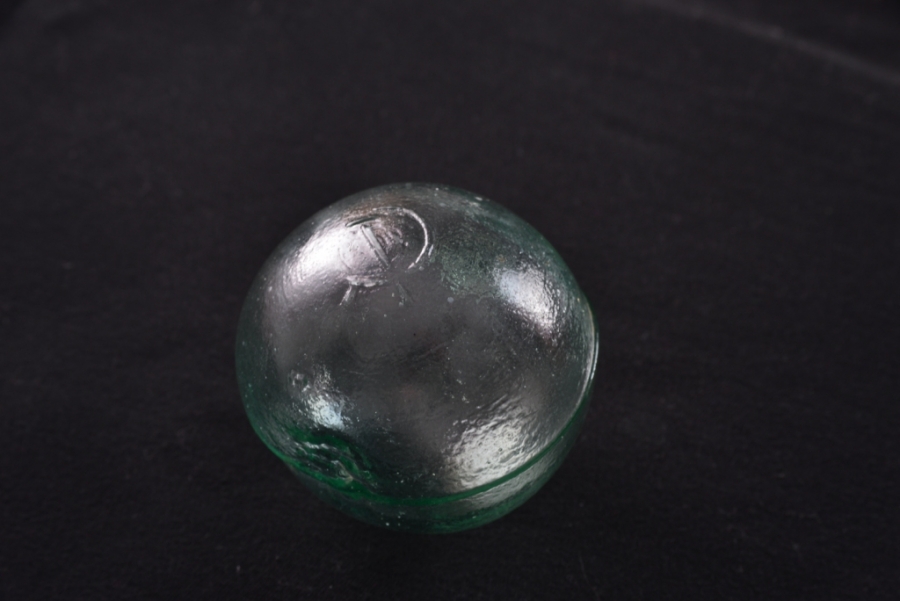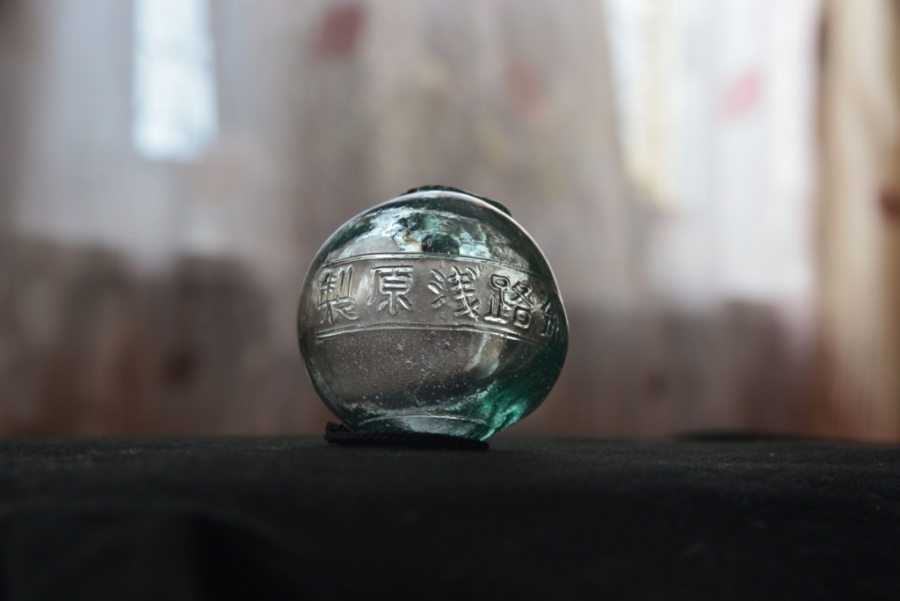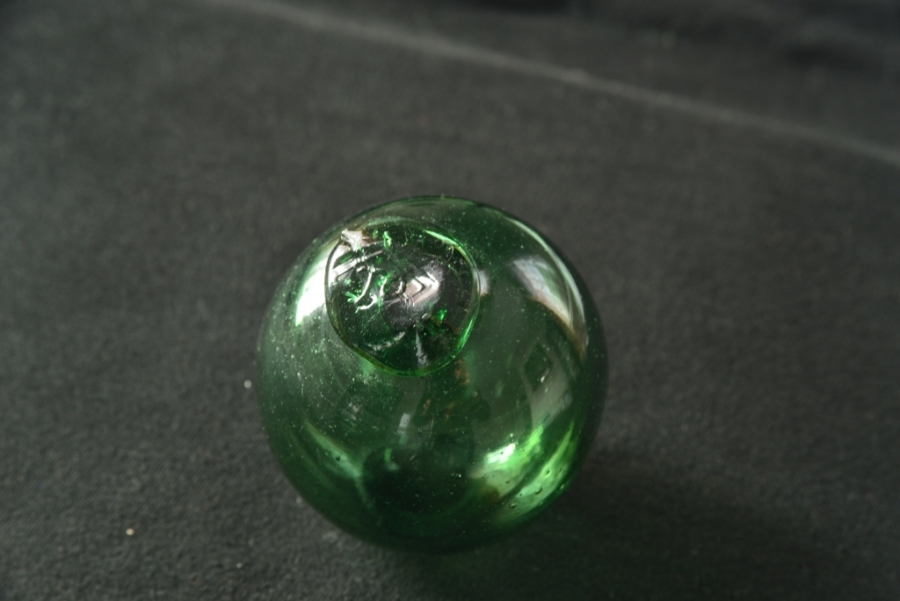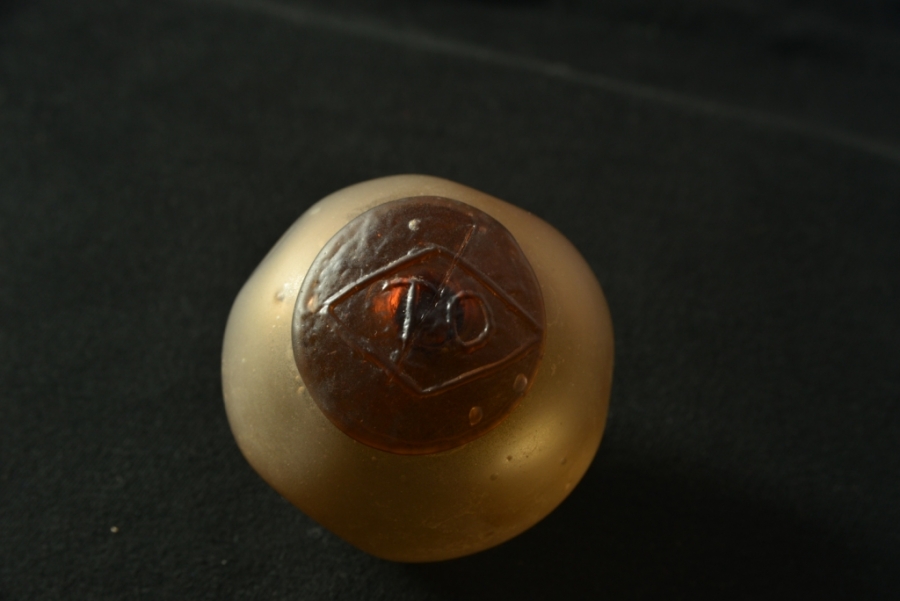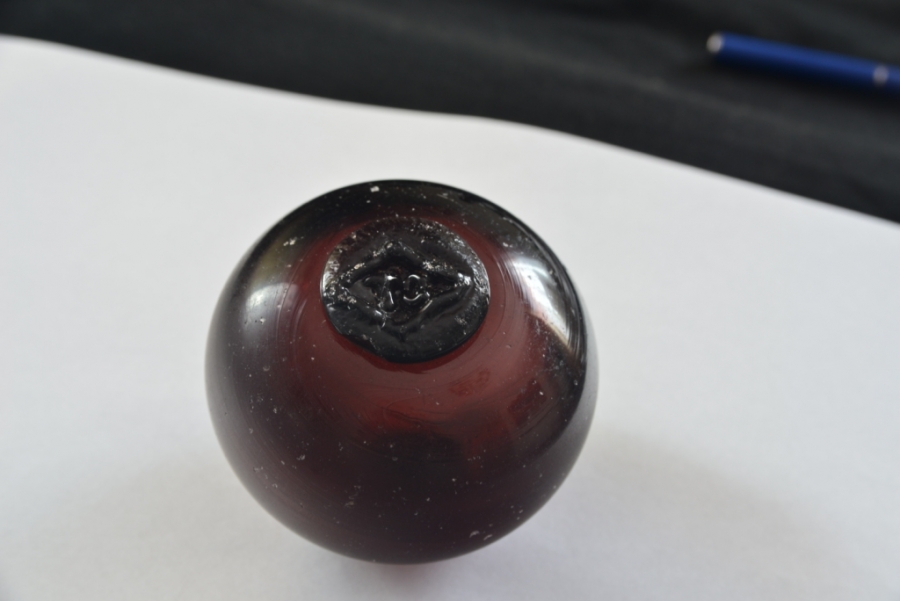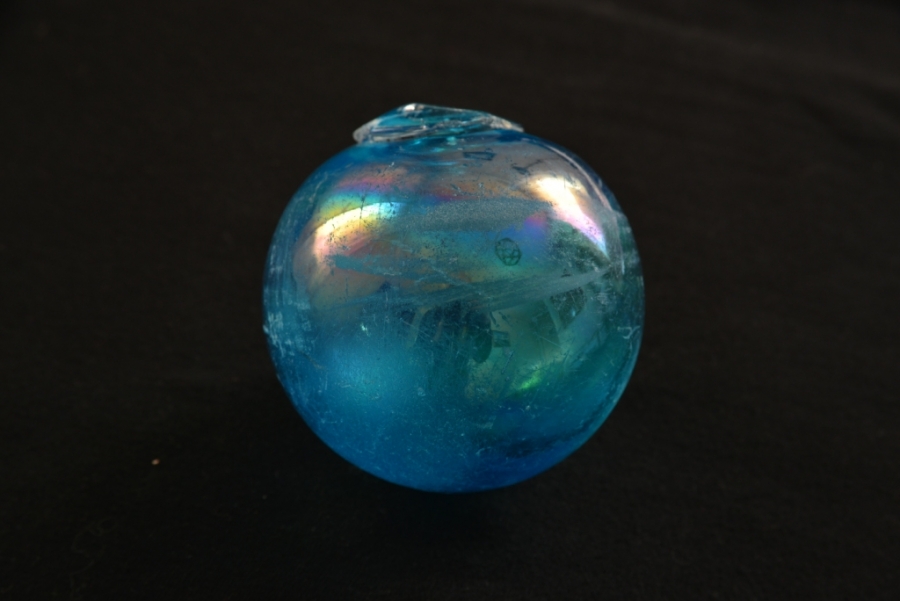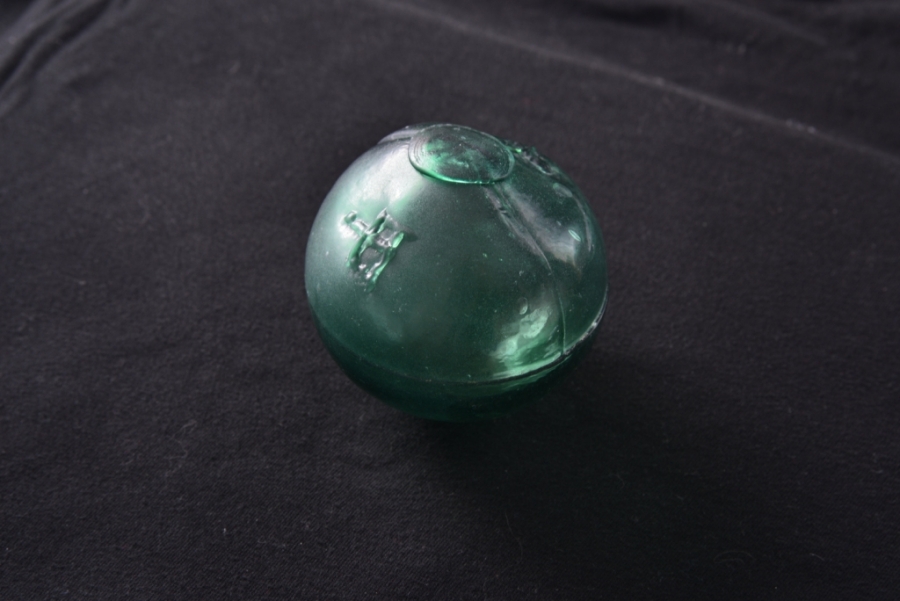
Olga Sokova
This star with a dot in the center is the side mark on the bi-mold float. The float is about 3" in diameter. It has very crude shape and the small seal button.
Difficult to tell anything definitely about real origin of such floats. They could be produced and used in Russia or China or Korea or Vietnam or Japan.
The float was found on the Kunashir island (Russia) near Hokkaido.
This side mark on the 2" float is ultra rare. This mark is Japanese traditional Yago mark. It's read Kagi-O (or Kane-O): katakana charactor オ+Kagi. Yago is Japanese charactor's trademark. The maker is unknown.
The well known Hammer & Sickle mark is a real mystery. Although floats with such sided mark are called "Russians" nobody can give any real facts about their origin and usage in the Soviet fishery. From the other side the H&S sign is the mark of the Soviet Union. China and Korea didn't and don't use it at all. But Vietnam uses it.
The float is crude with scabrous texture, bi-mold. It has a small seal button.
.
The "S" mark of WP #182 is not on a small Euro float. It's stamped on a green Japanese float 3 inches in diameter found on the Kunashir island (Russia) near Hokkaido.
This small ball (60 mm in diameter) has sided mark undocumented in WP's book "Glass Ball Marks". There are Japanese characters in the circle: the first line - "Kushiro, Hokkaido", the second line - "Kanazawa" (company's name) and "Kane-sada" (company's trademark).
This small ball (60 mm in diameter) has sided mark undocumented in WP's book "Glass Ball Marks". There are Japanese characters around the circumference:
釧路浅原製, it means "Made by Asahara Glass Co in Kushiro".
This TO in a diamond (WP #116) has green color. It's 73 mm in diameter.
Rare colorful balls were made at the Toyotomi Glass factory (Hokkaido).
This TO in a diamond (WP #116) has wonderful burgundy color. It's 76 mm in diameter.
Rare colorful balls were made at the Toyotomi Glass factory (Hokkaido).
This TO in a diamond (WP #116) has beautiful champagne color. It's 78 mm in diameter.
Rare colorful balls were made at the Toyotomi Glass factory (Hokkaido).
This TO in a diamond (WP #116) has awesome deep purple color. It's 78 mm in diameter.
Rare colorful balls were made at the Toyotomi Glass factory (Hokkaido).
The chrome glass fishing float is one of the most spectacular Japanese floats. Chrome and snakeskins are so striking, both used on octopus jigs. Chromes' colors are pearly. Their seal buttons are not thick as snakeskins' ones.
This pearly blue float is 77 mm in diameter. When we found it in 2012 on one of the Kunashir beaches, first we thought it was a New Year toy, then we realized that it was real working float.
This three-piece mold Japanese float has nice old mark - a Trident or Yo (WP #330). The float belongs to the first generation of tri-molds, this mark is uncommon. The float is 84 mm in diameter, frosted.
Beachcombed on one of the Kunashir island's beaches (Russia).
